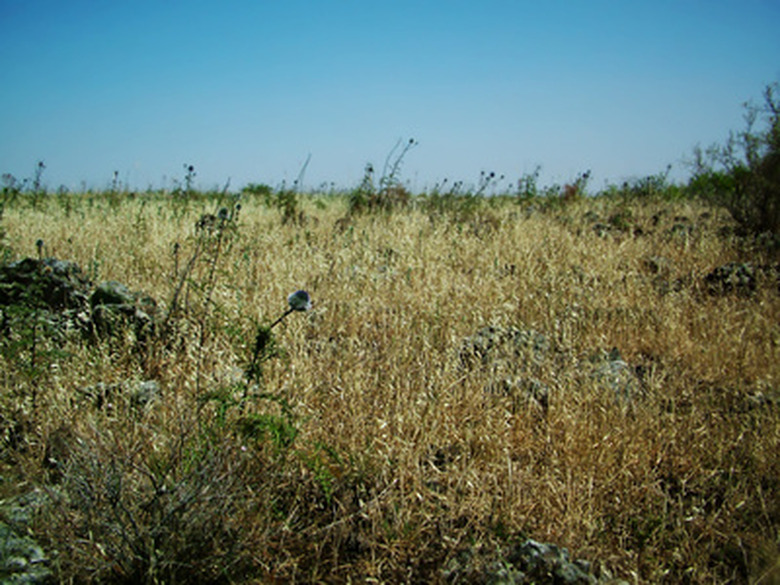How To Get Rid Of Grass Stickers
Things Needed
- Shovel
- Compost
- Pre-emergent herbicide
- Nitrogen-rich fertilizer
- Broadcast spreader
- Soil aerator
- Sprinkler
- Garden hose
- Lawnmower
- Post-emergent herbicide
- Dethatcher
Grass stickers are typically the seed heads of undesirable grasses such as burweed or sandburs in your lawn. The sticker is a cultural adaptation that the weed produces to help spread seeds. The sticker typically helps a seed affix to the fur of animals or the clothing of passing humans so that the seeds will spread over a wider range. The best way to eliminate stickers in a lawn is to keep your lawn healthy and use good cultural practices to crowd out lawn weeds.
Step 1
Test your soil in fall to determine the nutrient content of the soil. Grass needs healthy soil full of nutrients in order to maintain vigor. Most state agricultural colleges maintain soil testing facilities that will test your soil and give you unbiased advice on how to improve the nutrient content. You can contact your county extension service for paperwork, instructions on the preferred method of soil sample collecting and packaging, and fee information. The results of most soil tests are available within two to three weeks after you submit a sample.
- Grass stickers are typically the seed heads of undesirable grasses such as burweed or sandburs in your lawn.
- Most state agricultural colleges maintain soil testing facilities that will test your soil and give you unbiased advice on how to improve the nutrient content.
Step 2
Add a top dressing of compost to your lawn in spring to help boost the nutrient content of the lawn.
Step 3
Spread a pre-emergent herbicide such as the kind found in weed and feed mixes over your lawn every 30 days throughout spring starting at the point where plants such as forsythia and redbuds bloom. This will prevent many weed seeds from taking root in your yard.
Step 4
Add a granulated nitrogen-rich fertilizer such as a 10-0-0 to your lawn to help boost the production of your grass.
Step 5
Aerate your lawn with a soil aerator in spring. You can rent a soil aerator from a garden supply store. A soil aerator operates similarly to a lawnmower in that it has a pull-starter and you push it over your lawn in sections. However, where a lawnmower cuts grass, a soil aerator removes plugs of soil so that oxygen and water can reach the soil through the thick layer of the lawn's roots.
- Add a top dressing of compost to your lawn in spring to help boost the nutrient content of the lawn.
Step 6
Set your lawnmower to a height between 2 and 3 inches away from your soil. At this height, your lawn grass is tall enough that light will not reach any weed seeds in the grass and allow them to germinate. Never remove more than 1/3 of the lawn's total height at a time. Doing so will weaken the blades of grass.
Step 7
Water your grass with 1 inch of water for every 1 square inch of soil once every seven to 10 days.
Step 8
Spot-treat sticker weeds that were not controlled with a post-emergent herbicide by using a post-emergent herbicide before the weeds can form seed heads.
Step 9
Remove the thick layer of grass roots and dead grass stems called thatch that builds up with a lawn dethacher in fall. A lawn dethatcher can be rented at many of the same locations that a soil aerator is rented from. Like a lawnmower or soil aerator, a dethatcher starts with a pull starter mechanism. You operate a dethatcher by pushing it in sections over your lawn.
- Set your lawnmower to a height between 2 and 3 inches away from your soil.
